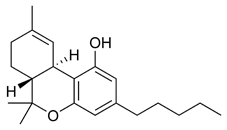One must weed through the politics to get anywhere near the science of medical marijuana.
The political trappings will be heavy this year as a class-action lawsuit brought by physicians against the federal government heads to court, and state ballots once again bring the question of medical marijuana before voters.
A 1996 California initiative legalized patients' cultivation or possession of marijuana for medical purposes with a physicians recommendation. But Office of National Drug Control Policy director Barry McCaffrey, Attorney General Janet Reno, and Secretary of Health Donna Shalala announced after the ballot that there are grounds for revoking the license of any physician recommending marijuana use.
Led by San Francisco dermatologist and AIDS specialist Dr. Marcus Conant, California physicians filed a lawsuit in 1997 against federal officials. The suit claims that the government was tying to restrict physician-patient dialogue protected by the First Amendment. The suit became a class action representing all California physicians treating patients with conditions that might benefit from marijuana use, and their affected patients.
Dr. Milton Estes recently sat across the table from government defense attorneys taking his deposition in the lawsuit. "It's unnerving to have to invoke the Fifth Amendment three times," Dr. Estes, an ob.gyn. on the faculty of the University of California, San Francisco, said at a meeting on cannabis therapy sponsored by the University of California, San Francisco.
In the interim, a U.S. district court judge has prohibited the government from threatening or prosecuting physicians, revoking their licenses, or excluding them from Medicare and Medicaid participation for recommending the medical use of marijuana, as long as they do not help patients obtain or cultivate the marijuana.
Any physician acting "in a professional, responsible manner should have nothing to fear under [California] state or federal law" when recommending medicinal marijuana, said Alice P. Mead, J.D., former legal counsel to the California Medical Association. She now counsels on medical affairs for a British pharmaceutical firm that is developing cannabis products.
The Drug Enforcement Agency classifies marijuana as a schedule I drug with "no currently accepted medical use." A synthetic version--dronabinol (Marinol)--recently was reclassified from schedule II to schedule III, meaning it has an accepted medical use and can be prescribed without a triplicate form, like any other medication.
A new peer-reviewed medical journal, the journal of Cannabis Therapeutics (Ha-worth Press, Binghamton, N.Y.), will join the fray with its first issue later this year. The editor will be Dr. Ethan B. Russo, a neurologist at the University of Washington and the University of Montana.
Voters in Colorado and Nevada will consider initiatives on ballots in November that would protect from prosecution patients who grow or possess marijuana with a doctor's recommendation. Nevada voters passed the initiative once, but the state constitution requires a second vote.
If passed, these states would join six others with comparable laws: Alaska, California, Hawaii, Maine, Oregon, and Washington. The District of Columbia passed a similar law that Congress overruled.
Lawmakers in nine more states considered comparable medical marijuana bills in the 1999-2000 legislative session without passing them: Arkansas, Iowa, Maryland, Massachusetts, Minnesota, New Hampshire, New York, Vermont, and Wyoming.
In 10 states, laws let doctors "prescribe" marijuana (the laws are largely symbolic because the federal government regulates prescribing): Arizona, Connecticut, Iowa, Louisiana, Montana, New Hampshire, Tennessee, Vermont, Virginia, and Wisconsin.
Fourteen states have laws to set up "therapeutic research and distribution programs" to facilitate medical marijuana research. So far none is running, according to the Marijuana Policy Project, Washington, D.C., a pro-marijuana advocacy group.
Legislative Initiatives on Medical Marijuana
* 6 states have laws that protect patients who possess and grow their own medical marijuana with a doctor's recommendation
* 14 states have laws that allow medical marijuana research and distribution programs, provided that the federal government cooperates
* 10 states and the District of Columbia have symbolic medical marijuana laws
* 15 states considered medical marijuana legislation during their 1999-2000 state legislative session
Source: Marijuana Policy Project
COPYRIGHT 2000 International Medical News Group
COPYRIGHT 2001 Gale Group



